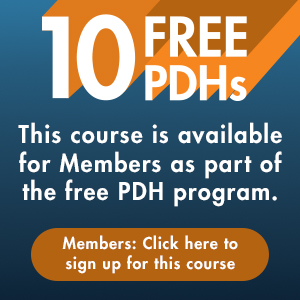

This product is available for group registration. Learn More
View Important Policies and System Requirements for this course.
This webinar was co-sponsored by ASCE's Construction Institute (CI) and ASCE Continuing Education
Instructors:
John Gambatese, Ph.D.
Wayne Crew, P.E.
Course Length: 1.5 Hours
Purpose and Background
The construction industry has made great strides to improve safety on job sites, yet continues to experience a large and disproportionate number of worker injuries and fatalities compared to other work industries. As the industry looks for ways to improve construction site safety, attention is being focused on those practices, implemented both prior to and during construction, that have been shown to benefit safety. In addition to concentrated safety efforts during construction, current safety management knowledge and concepts indicate a need to start addressing safety during planning and design. As a result, both engineers and constructors have a role in safety. Hazard identification along with risk assessment and mitigation play a big part in injury and fatality prevention. Developing an overarching, comprehensive safety program for a project that integrates both design and construction requires forethought and planning. Using the hierarchy of controls as a starting point, this webinar presents an overview of recommended practices for such a program that takes advantage of both design and construction to promote safe construction sites.
Primary Discussion Topics
- Current safety management concepts and practices
- Utilizing the hierarchy of controls for mitigating safety hazards
- Safety constructability: addressing safety through the design of a project
- Zero injury techniques for implementation during construction
Learning Outcomes
Upon completion of this course, you will be able to:
- Describe the hierarchy of controls and its application to mitigating hazards on construction sites
- Explain the need for, and benefits of, addressing safety early in a project lifecycle prior to construction
- List construction management techniques for improving safety during construction
Webinar Benefits
- Find out how to structure a safety program that involves the entire project team
- Learn a new way to think about structuring safety programs
- Gain an understanding of how engineers can play a role in safety
- Learn which types of safety controls are better than others
- Find out which injury prevention techniques are highly effective
- Learn what "safety constructability" is
- Understand how safety practices differ in terms of reliability
Assessment of Learning Outcomes
Students' achievement of the learning outcomes will be assessed via a short post-assessment (true-false, multiple choice and fill in the blank questions).
Intended Audience
- Design Engineer
- Construction Project Managers
- Owner representatives on capital projects
Webinar Outline
- Introduction
- Safety performance in the construction industry
- The need for developing a project-specific safety program
- The benefit of including all project team members in the safety program
- Concepts and resources available for developing a safety program
- Why accidents occur and the impacts of injuries/fatalities
- Hazard identification and risk assessment
- Risk and reward
- A starting point: Hierarchy of Controls
- Elimination
- Substitution
- Engineering
- Administrative (e.g., construction management zero injury techniques)
- Personal Protective Equipment (PPE)
- Current safety practices
- A description of the extent to which each practice is being implemented in industry and future practices being considered by industry
- Concluding remarks; questions and comments from the audience
How to Earn your CEUs/PDHs and Receive Your Certificate of Completion
To receive your certificate of completion, you will need to complete a short on-line post-test and receive a passing score of 70% or higher within 1 year of purchasing the course.
How do I convert CEUs to PDHs?
1.0 CEU = 10 PDHs [Example: 0.1 CEU = 1 PDH]
